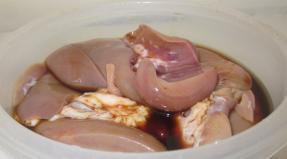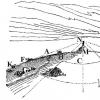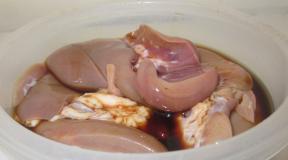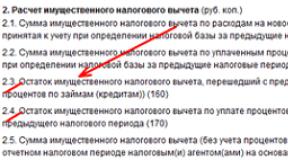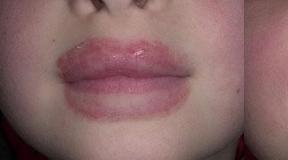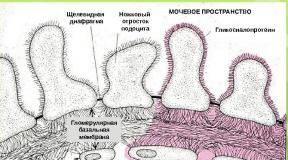Ultrasound for children: norms. Preparation for ultrasound diagnostics of the liver in children and interpretation of the study. Ultrasound measurements in children are normal.
This type of examination can be prescribed to babies from the day they are born. It should be noted that when a child turns one month old, he certainly undergoes an ultrasound of the abdominal organs to clarify the actual condition of the abdominal organs.
This type of research has been used in pediatrics for more than two decades. With its help, congenital anomalies are identified, incipient pathological abnormalities are recognized, and timely therapy is prescribed. The examination is painless, lasts no more than twenty minutes, and does not harm the child’s body.
There is only one feature in performing ultrasound - strict adherence to the requirements of the preparatory system, which differ for children of different age categories.
How safe is it to perform an ultrasound on a child?
Many scientific studies have been devoted to this issue, and today there is every reason to confidently state that this method is considered absolutely harmless and the most reliable when compared with other types of examinations - x-rays, fluorography, etc.
Ultrasound does not create radiation exposure; there is no radiation exposure at all. Ultrasound has nothing to do with radiation, as it has a different nature of origin. At its core, it is a simple sound, only higher frequency. Its range (1-12 MHz) is beyond human perception, for this reason he cannot hear anything.
Let us note that this kind of vibration exists in the noise emitted by the winds and sea surf, and in the sounds of some animals. The examination does not cause any discomfort; it is performed in a relaxed atmosphere, which plays an important role for children.

Indications for abdominal ultrasound
The examination can be prescribed as planned; often the doctor will refer you for an ultrasound scan, based on the data obtained during the external examination. Specialists in pediatrics or gastroenterology can issue a referral for an ultrasound examination.
The main indications for this type of scanning are:

What is detected in children during diagnosis?
Ultrasound examination of the baby’s organs involves examination of the liver and paired organs, spleen, pancreas, and gall bladder. Normal indicators and individual characteristics for each of these organs are necessarily indicated in the transcript of the results. Sometimes kidney examinations in children are performed separately. At the same time, the adrenal glands and urea are examined.
In addition to congenital anomalies, ultrasound can detect certain pathological changes in organs located in the child’s abdominal cavity:
- infectious mononucleosis, blood diseases, internal bleeding. This will be evidenced by changes in the size of the spleen;
- new formations, liver abscess, harmful microorganisms in the liver tissues;
- a pancreatic disease called reactive pancreatitis. Most often it manifests itself in infants;
- deviations in gallbladder motility, stones, dropsy, cholecystitis;
- , new formations, cysts, pyelonephritis.
Ultrasound examination of organs using Doppler, offered today in most paid clinics, will help identify congenital kidney defects.
How to prepare a child for research?
In order to obtain the most reliable results of the study, the child should be thoroughly prepared for it. The stage begins well in advance, three to five days before the examination. The main requirement is to create acoustic accessibility for each organ that needs to be studied. This means that there should be no leftover food, air or gases left in the baby's stomach.
In addition, when digestive processes occur in the baby’s body, the organs also take part in the work - the pancreas is slightly enlarged, the gall bladder sharply changes its size. During scanning, all this prevents the specialist from correctly assessing the parameters and condition of a particular organ.

To properly prepare for an ultrasound, there are several rules:
- If the procedure is for newborns, then you should not feed the baby for three hours before it. It is best to perform the examination in the morning, when the baby is not yet hungry enough.
- To prepare for an ultrasound of babies aged from one to three years, you should skip the feeding process once. One hour before the examination, you must avoid drinking any liquid. In exceptional cases, it is allowed to give the child a small amount of plain water, slightly sweetened, so that he does not become capricious.
- Children over three years old are not afraid of a small hunger strike. In this case, an ultrasound is scheduled either in the morning or in the afternoon. The last meal should take place six to eight hours before the procedure.
- When a child develops gas, it is necessary to start taking Espumisan a few days in advance to eliminate flatulence. The intestinal tract must remain empty before the examination; for this, it is recommended to perform an enema about twelve hours before.
Diet before the procedure
 An individual list of dishes can be compiled for each child, but there are also generally accepted prohibitions:
An individual list of dishes can be compiled for each child, but there are also generally accepted prohibitions:
- dairy and fermented milk products are excluded;
- It is necessary to remove fresh vegetables and fruits, baked goods, brown bread, and legume dishes from the diet;
- It is not allowed to consume fatty fish and meat, carbonated drinks, candies and other sweets.
The basis of baby food on such days should be porridge, poultry, cheese, boiled eggs, and low-fat fish. Children are not given medications on the day of the procedure. Particular attention should be paid to taking other stimulants of liver or pancreas performance.
How is the diagnosis done?
 To perform a research session, there is one method - external (transabdominal). The specialist applies a special gel composition to the skin and begins to move the sensor over the surface of the abdomen.
To perform a research session, there is one method - external (transabdominal). The specialist applies a special gel composition to the skin and begins to move the sensor over the surface of the abdomen.
The procedure lasts no more than twenty minutes; the doctor can turn the child on his back and ask him to inflate his tummy. More fearful children sometimes have to stand up, hold their breath, and take a deep breath.
During the examination, the main task of parents is to explain to the child that the process will go quickly and without pain. During the ultrasound, it is best for the baby to wear loose-fitting clothes to make it easier to expose the abdomen.
Norms and decoding
Properly preparing the child for the examination and doing the ultrasound itself is not the most important thing. The scan readings must be interpreted correctly. As a rule, after an ultrasound, a transcript is given to adults or attached to an outpatient card. The data needs to be analyzed by a specialist in pediatrics or gastroenterology - depending on who issued the referral.
The ultrasound examination standard implies the presence of the following indicators:
- The parameters of the liver's lobes, structural structure, echogenicity, dimensions of the bile duct and portal vein, and edges are determined.
- When examining the spleen, attention is paid to shaped differences, structure and parameters.
- In cases with the pancreas, in addition to the usual sizes, the presence of formations in the ducts and tissue cells is checked.
- The gallbladder is examined for contents, wall thickness, shaped differences and size;
- In addition to the parameters of a paired organ, the structure, the presence of stones in them, and the thickness of the walls are checked.
The norm is that all organs differ in normal sizes and shapes, tissues do not grow, stones are not found, cysts, new formations and fluids are absent.
The diameter of all vessels should remain normal. The outflow of urine and the condition of the bile ducts are checked.
Doctors do not recommend that parents transcribe the study themselves. The fact is that in normal conditions, ultrasound readings of the abdominal organs in adults and children differ. In addition, in young patients these values still vary depending on the age category.
For example, if for an infant some indicators are considered normal, then for older children they are already compared with pathological deviations.
Often, an ultrasound examination detects abnormal developments in the organs, which after some time independently become normal. Sometimes non-standard forms of organs are considered the individuality of the body and do not in the least interfere with the baby’s life.
The liver is a huge biochemical laboratory in the human body. It neutralizes toxins (performs a detoxification function), synthesizes proteins, enzymes, vitamins, and controls energy balance.
To objectively assess the detoxification and synthesizing function of the liver, ultrasound diagnostics are performed. The diagnostic procedure of liver ultrasound allows you to assess the homogeneity of the tissue structure, the size of the organ, and helps determine the presence of pathological formations.
Preparing for the study
Preparation for the study begins in advance: normally, 4 days before the procedure. The main goal of preparation is to get rid of gases in the intestines.
An ultrasound scan is performed on an empty stomach, with strict adherence to the recommendations for preparing for the procedure. Recommendations for following a diet 3-4 days before the procedure are as follows:
- refuse foods rich in fiber (vegetables, fruits);
- for constipation and flatulence, do an enema as a bowel preparation;
- foods that contribute to increased gas formation should be excluded from children’s diet for 2 days (cabbage, milk, white bread, rice, legumes);
- exclude foods high in calories;
- Normally, you should not eat food 7 hours before the test.

 The main obstacle to normal liver visualization on ultrasound is intestinal distension. Therefore, the diet in preparation for the study is aimed at reducing the amount of gases
The main obstacle to normal liver visualization on ultrasound is intestinal distension. Therefore, the diet in preparation for the study is aimed at reducing the amount of gases Ultrasound examination procedure
To prepare the “research field,” the doctor applies a gel to it, which promotes better visualization of the organ structures. Next, diagnostics are carried out.
Options for baby's body position:
- on the back;
- on the right or left side;
- in a sitting position.
Before scanning, the child is asked to take a deep breath, the doctor immerses the sensor in the hypochondrium area. In this way, better visualization of the organ is achieved by reducing the distance between the sensor and the liver. Then the research results are deciphered. The degree of reliability of the results is directly proportional to the quality of preparation for the procedure.
Normal ultrasound readings
- the parenchyma has a homogeneous structure, interrupted by the portal vein;
- veins and bile ducts are clearly visualized.
In children, quantitative indicators depend on age. Normal dimensions of the right lobe of the liver from the upper to the lower edge:
- 1 year of life - 6 cm, for each subsequent year 6 mm are added;
- 15 year of life - 10 cm;
- 18 year of life - 12 cm.
Indicators of the size of the left lobe of the liver from the upper to the lower edge:
- 1 year of life - up to 4 cm, for each subsequent year of life 2 mm are added;
- 15 year of life - up to 5.5 cm;
- 18 year of life - up to 5 cm.

 The liver is an organ that is perfectly visualized on an echogram. This feature allows the doctor to obtain the characteristics of the child’s organ, and then compare them with normal values.
The liver is an organ that is perfectly visualized on an echogram. This feature allows the doctor to obtain the characteristics of the child’s organ, and then compare them with normal values. Interpretation of diagnostic results
Hepatomegaly– the most common pathology, which is an enlargement of the child’s liver. The indicator is inversely proportional to age. In children under 7 years of age, there may be unexpressed enlargement of the organ, which is recognized as a variant of the norm. Typically, the liver protrudes from under the costal margin up to 2 cm. When the organ enlarges by more than 2 cm during the child’s school and teenage years, this indicates the presence of pathological changes. In this case, the main task of the doctor is to find out the causes of the pathology.
The causes of the disease can also be metabolic disorders:
- mucopolysaccharide metabolism;
- deposition of pathological amyloid protein in tissues (amyloidosis);
- porphyrin metabolism (a substance that forms red blood cells);
- fat metabolism;
- protein metabolism (insufficient amount of alpha-antitrypsin).

 Hepatomegaly (liver enlargement) is one of the most common pathologies in children. It may be associated with toxic effects on the liver, viral hepatitis, TORCH infections and metabolic disorders
Hepatomegaly (liver enlargement) is one of the most common pathologies in children. It may be associated with toxic effects on the liver, viral hepatitis, TORCH infections and metabolic disorders Obstruction of the flow of bile and blood can also be the cause of hepatomegaly, due to diseases such as:
- Wilson-Konovalov disease;
- cirrhosis (ultrasound signs of cirrhosis are well visualized during diagnosis);
- hepatic vein thrombosis;
- congenital malformation - atresia (absence) of the bile ducts.
The cause of the development of the disease may be infiltrative damage to the liver tissue resulting from the following pathologies:
- blood cancer;
- hemolytic disease of the newborn (with Rh incompatibility of the fetus and mother);
- metastases of tumors of other organs;
- lymphoma (tumor of the lymphatic system);
- hepatoma (neoplasm of liver tissue);
- hemochromatosis (improper metabolism of iron in the blood);
- histiocytosis (increased division of immune cells);
- the emergence of a focus of hematopoiesis (production of blood cells).
Primary damage to the liver tissue is also a factor in the development of hepatomegaly:
- cirrhosis (replacement of liver parenchyma with connective tissue);
- polycystic disease is a congenital disease characterized by the appearance of many cysts in the organ tissue;
- fibrosis (replacement of normal liver tissue with scar tissue);
- Hemorrhagic telangiectasia is the dilation of hepatic vessels and the occurrence of bleeding.
In addition, hepatomegaly can develop due to:
- hyperplasia (increased number) of Kupffer cells - macrophages that utilize dying hepatocytes and foreign agents;
- sepsis;
- a large amount of vitamin A in the child’s body.
There is also a concept - “false hepatomegaly”. Its cause is a pathology of the respiratory system, namely the lungs. It is characterized by the fact that the increased volume of the lungs “puts pressure” on the liver from above and “displaces” it from under the ribs. For example, with emphysema (increased airiness) of the lungs.
Features of the symptoms of hepatomegaly
Signs of hepatomegaly upon examination:
- signs of enlargement of the organ when palpating its edge and tapping (exit from under the costal edge by more than 2 cm);
- increased abdominal circumference of the child;
- the “head of the jellyfish” symptom is a venous network around the child’s navel, indicating portal hypertension;
- pain and feeling of heaviness in the right hypochondrium;
- symptoms of intoxication;
- increased skin pigmentation;
- icterus of the sclera and skin (icteric color, due to an increase in the level of bilirubin in the blood).
If the organ is moderately enlarged, then the symptoms are mild or absent. In addition, poor preparation for the procedure is possible, which can distort the result. Reliable signs of pathology are changes in the ultrasound picture.
Direct indicators of cirrhosis:
- parameters exceed the norm;
- uneven edges and contours (on an ultrasound picture it looks like a tuberosity);
- increased echogenicity of the tissue structure on ultrasound, which indicates the appearance of connective and scar tissue in its parenchyma;
- the bottom edge becomes rounded.
Indirect indicators of portal hypertension:
- the lumen of the portal vein is increased;
- spleen parameters exceed the norm;
- dilatation of the esophageal veins, with the threat of bleeding from them;
- ascites (loose fluid in the abdominal cavity);
- liver failure.
Heart failure:
- there is an expansion of the lumen of the hepatic veins on the ultrasound picture;
- the diameter of the lumen of the inferior vena cava does not change during breathing;
- the presence of free fluid in the pleural cavity.
Acute hepatitis: parameters are higher than normal. The ultrasound sign is not specific; laboratory research methods are used for accurate diagnosis.
Abscesses:
- smoothness of contours;
- increased echogenicity.
Metastases of malignant neoplasms:
- contours are clear or unclear.
Lymphoma:
- reduced echogenicity of areas of liver tissue;
- the contours are blurred.
Hematomas:
- blurred contours;
- increased echogenicity with the appearance of blood clots.

 Ultrasound examination diagnoses malignant liver tumors very well. They are usually hyper- or hypoechogenic
Ultrasound examination diagnoses malignant liver tumors very well. They are usually hyper- or hypoechogenic Treatment of diseases
Both conservative and surgical methods are used. The choice of method depends on:
- nosological unit;
- severity of the disease;
- involvement of other internal organs in the pathological process;
- timeliness of diagnosis.
For example, diseases such as an abscess or cyst are treated exclusively by surgery. And hepatitis or poisoning with toxic substances can be easily treated with medications.
In conclusion, let us remind you that you must pay special attention to your child. Take an interest in his well-being, pay attention to his behavior, appetite, and activity. At the slightest suspicion of a disease, you need to urgently contact a specialist and not self-medicate! And when preparing for the prescribed examination, strictly follow all the doctor’s recommendations. Remember that any disease is easier to treat in the early stages of development.
Good day, dear parents. In this article we will talk about how to do an abdominal ultrasound for children. You will know how to prepare your baby for this procedure, and what indications indicate the need for an ultrasound.
Indications for use
Bad breath may be an indication for an abdominal ultrasound
In children under one year of age, the need for an ultrasound examination of the abdominal cavity is determined by the presence of the following factors:
- in a newborn to exclude congenital pathologies, especially for those who had a difficult birth;
- with frequent regurgitation;
- lack of weight;
- for the purpose of refuting or confirming pylorospasm;
- in the presence of diarrhea;
- in the absence of elevated temperature.
In older children, indications for an ultrasound will be:
- a feeling of bitterness in the mouth;
- bad odor from the mouth, which is present throughout the day;
- painful sensations in the abdominal cavity without clear localization;
- belching, especially sour or bitter;
- supra-dimensional gas formation;
- identification of enlarged organs in the abdominal cavity upon palpation;
- abdominal injury.
Preparatory stage

When preparing for an ultrasound of the abdominal organs, you need to pay special attention to nutrition
- dairy, fermented milk products;
- fresh vegetables and fruits;
- baking;
- black bread;
- fatty meat and fish;
- legumes;
- soda.
Procedure

Ultrasound examination is a painless diagnostic method.
- The baby lies down on the couch, which has been made in advance.
- The child lifts his jacket, exposing his stomach, and lowers his pants a little, unbuttoning his fly, if there is one.
- The doctor applies a special gel to the sensor, starting to move it over the child’s abdomen in its various parts.
- During the examination, it may be necessary for the little one to inflate his tummy for a better examination of the internal organs.
- Often this study is carried out together with a kidney examination. Then there will be a need to roll over on your stomach and side.
- At the end of the procedure, the doctor will give the baby a napkin or wipe off the gel himself.
Norm
- presence of organ sizes in accordance with the child’s age;
- absence of gallstones;
- correct shape of organs;
- Wall thickness;
- good outline;
- absence of tissue proliferation, tumors and cysts;
- normal size of blood vessels.
What will the results say?
When examining the liver, the following diseases can be identified:
When examining the spleen, it is diagnosed:
- organ hypertrophy;
- gap;
- internal bleeding.
When examining the gallbladder, you can reveal:
- presence of stones;
- cholecystitis;
- dropsy.
Examination of the pancreas may indicate the presence of pancreatitis.
A general examination of the abdominal cavity can reveal:
- blood stagnation in the liver;
- enlarged retroperitoneal lymph nodes;
- narrowing of the bile ducts;
- increase in the size of the spleen;
- pathology in the circulatory processes of the abdominal aorta.
The procedure itself is painless and lasts no more than 15 minutes. However, when going to the ultrasound diagnostic room for the first time, the baby may be afraid. The parents’ task is to do everything to calm the little one down and to ensure that the study itself goes as calmly as possible for him.
Modern methods for diagnosing various liver diseases in children also include ultrasound examination. This examination has already become routine and is used in a wide variety of clinical cases. Establishing the size of the liver is included in any clinical protocol for ultrasound examination.
Features of the structure and functioning of the liver
The liver is an organ that is responsible for performing a variety of functions in the body. These include: synthesis of certain hormones, detoxification of breakdown products and chemical toxins, participation in hematopoiesis, formation of bile, maintenance of immunity and many others. Determining the size of the liver is very important. Many pathological conditions, including those that are very dangerous to the life and health of children, cause a significant enlargement of the liver - hepatomegaly.
For quite a long time, only the palpation method was used to determine the boundaries of this organ. It is still carried out by doctors during a clinical examination of a child. However, palpation of the liver and determination of boundaries using this method is only indicative. The true size of the organ can be determined only when using special instrumental types of examinations.


Currently, such instrumental tests include ultrasound. It is safe and does not cause any pain in the child during the procedure. Typically, the duration of one study is 20-25 minutes. The timing of the ultrasound procedure usually depends on the qualifications and experience of the doctor conducting the examination, as well as on the emotional state of the child. If the baby is nervous or starts screaming and crying, this can significantly complicate the study.
An ultrasound is usually performed in a special darkened room. The baby lies on his back on a couch covered with a diaper. The doctor lubricates the sensor with a special gel and begins to conduct the examination. During the examination, the doctor can see all the pathological changes in the liver tissue, as well as determine the size of the liver boundaries.
Ultrasound examinations are actively carried out for children from 2 years of age. At an earlier age, there are certain clinical indications for ultrasound.


There are special tables that indicate normal sizes of a healthy liver. They are used by ultrasound doctors working all over the world. The tables are compiled taking into account the age of the child. They allow doctors to evaluate the result obtained and are also necessary to establish clinical signs of hepatomegaly.
The structure of the liver includes several anatomical structures - they are called hepatic lobules. Ultrasound allows you to set the parameters of the right, caudate, left and quadrate lobes of the liver. Also, using this study, it is possible to identify various pathological changes in all 8 segments. Ultrasound examination is also very effective for diagnosing various liver pathologies in newborns.
In addition to the structure of the liver tissue, the ultrasound diagnostic doctor also conducts visual inspection of all adjacent anatomical organs to the liver. Experienced doctors can also evaluate the condition of the ligamentous system of the liver. Typically, the ligaments become visible when free fluid appears in the abdominal cavity.
During the study, the doctor also examines the blood vessels supplying the liver. For this, an additional Doppler mode is used.


Currently, there are a huge variety of different tables that indicate the age parameters of normal liver sizes. Below is one of them. To assess the condition of the organ, the dimensions of the right and left lobes of the liver are mainly used. The parameters depend on the age of the baby. It is important to note that these indicators are indicative and should be assessed comprehensively when making a clinical diagnosis.
The normal size of the liver (from the upper to the lower edge) is presented in the following table:
Preparation
Determining the exact boundaries of the liver and the true size of this organ using ultrasound is quite simple. The high resolution of the devices allows you to obtain the clearest and most reliable images of internal organs. Hundreds of thousands of ultrasound examinations are performed every day around the world.
To obtain an accurate result when examining internal organs, it is very important to carry out preliminary preparation. Many parents often neglect this, which subsequently leads to the fact that ultrasound doctors cannot establish an accurate diagnosis. Preparation for an ultrasound is not complicated and is quite easy to do yourself at home.


The main condition for performing a qualitative study is the release of gas from the intestines. It significantly reduces obtaining a reliable result.
Intestinal loops swollen with gas do not allow the doctor to fully examine the liver and all its anatomical components. In order to reduce gas filling, a couple of days before the study, all foods that increase gas formation are removed from the baby’s diet. These include: fruits and vegetables rich in coarse fiber, bread and baked goods, carbonated drinks and kvass, milk, as well as a variety of confectionery products.
If your baby has chronic diseases of the digestive system that cause severe gas formation, then you should consult with your doctor about what medications should be used on the eve of the ultrasound procedure to reduce gases in the intestines. Children are usually prescribed enzyme agents and enterosorbents. Before an ultrasound examination, the baby should not undergo gastro- or fibrocolonoscopy.


The psychological attitude before the study is also very important, especially for the youngest patients. For young children, it is better to turn the examination into a real exciting game. With older children and especially teenagers, you should discuss how the procedure will be performed. During the conversation, it should be noted that this test is absolutely safe and will not cause any pain to the child.
Why is it carried out?
Ultrasound examination of the liver is performed for a wide variety of pathological conditions. This method allows one to obtain fairly accurate and reliable results, which help treating physicians establish correct diagnoses and, therefore, prescribe optimal and effective treatment regimens.
The absence of radiation exposure allows this study to be used in both newborns and older children.


An ultrasound examination of the liver is used to diagnose:
- Inflammatory diseases. As a result of severe inflammation, the density and structure of the liver tissue changes. This causes the liver to increase in size. This symptom may be persistent or disappear after treatment.
- Neoplasms and malignant tumors. Today, it is ultrasound examination of the liver that is used as a screening for these dangerous diseases. Using this method, it is possible to detect tumors in the liver at fairly early stages. Ultrasound can also detect metastases of other tumors growing in other organs.
- Cystic formations. The presence of cavity contents in the liver tissue is often a sign of a cyst. This pathological condition is quite often recorded in children during ultrasound examination. Detection of a cyst should be a reason to consult a doctor.
- Liver cirrhosis. This pathological condition practically never occurs in pediatric practice. The pathology is manifested by a pronounced enlargement of the liver. The prognosis for the course of the disease is extremely unfavorable.
- Stagnant processes associated with biliary excretion. Severe stagnation of bile can contribute to the development of chronic cholecystitis or hepatitis. Stretching of the bile ducts indicates the presence of signs of bile accumulation.
- Vascular pathologies. Liver hemangiomas are usually very well detected by ultrasound with an additional Doppler mapping mode. The study allows us to identify these dangerous pathologies at the earliest stages.
To learn how to prepare for a liver ultrasound, watch the following video.
Ultrasound examination is a fairly common method for diagnosing various diseases and conditions in childhood. It allows you to obtain fairly informative results in a non-invasive way. Ultrasound has no age restrictions, and therefore is performed both for a newborn in the maternity hospital and for an infant at any period of life, both for medical reasons and as part of a comprehensive screening study.
We will tell you in this material what types of children's ultrasounds there are, what they can show, how to prepare a child for ultrasound diagnostics and whether it can cause harm.

The essence of diagnosis
Ultrasound examination was adopted by doctors only a little over 20 years ago. The essence of the method lies in the ability of ultrasonic waves to be reflected differently from different media - liquid or the walls of internal organs. The ultrasonic signal is generated by a special sensor. It also receives the reflected, returned signal and projects the image onto the scanner monitor.
The equipment is always equipped with complex programs that allow you to analyze the image, avoiding long and difficult mathematical calculations. The dimensions of the organs, volume, and structure make it possible to establish with high accuracy special mathematical algorithms embedded in the program for ultrasound scanners.
An ultrasound that produces a black and white image is called two-dimensional. Sometimes there is a need not only to inspect something, but also to evaluate functionality. This need often arises when assessing the functioning of blood vessels. Then they do an ultrasound with Doppler. Duplex examination gives a color picture. If desired, a color three-dimensional 3D ultrasound can be performed, but this need is mainly for pregnant women who want to know the gender and examine the appearance of the unborn child. Although 3D ultrasound is not contraindicated for children, it is, in fact, not necessary.



Varieties
Ultrasound is divided according to its purpose into emergency and planned. An emergency is carried out in order to establish an accurate diagnosis in the presence of objective complaints. A planned study is carried out as part of the mandatory screening recommended by the Ministry of Health - at 1 month, and then when the child is registered in an educational institution. A comprehensive screening study includes ultrasound of the brain, hip joints, abdominal cavity, bladder and kidneys.
When registering for admission to an educational institution, the child undergoes an ultrasound of the heart, abdominal organs, kidneys and bladder. If necessary, ultrasound of the retroperitoneal space and superficial organs - thyroid gland, thymus gland (thymus), etc.
Let's talk about the main types in more detail.

Neurosonography
NSG is an ultrasound scan of brain structures. An informative study is carried out on children from birth until the “fontanelles” on the head tighten and close. The mobility of the cranial bones and the presence of the so-called “fontanelles” make it possible to examine the brain structures with a sensor applied to the area of the large “fontanelle”. If an assessment of the blood supply to the brain is required - duplex scanning, an additional sensor is used to examine the cervical spine and blood vessels of the neck.
The method makes it possible to assess the symmetry of the hemispheres, the state of the cerebral cortex, and individual areas of the organ that are important for normal development and functioning. Ultrasound can establish ischemia, the presence of cerebral hemorrhage, hydrocephalus, ventricular enlargement, neoplasms and edema. Neurosonographic examination is also recommended after a fall and head impact to exclude traumatic brain injuries.

It should be noted that a diagnosis cannot be made based solely on ultrasound results. But negative markers detected by an ultrasound diagnostic specialist will be a good reason for prescribing the child a more detailed and more informative examination of the brain - computed tomography, MRI.
Abdominal organs
The abdominal organs are a large list of the most important internal organs. During the study, the condition of the liver, stomach, gallbladder and bile ducts, esophagus, pancreas, spleen, parts of intestinal loops, large vessels of the abdominal cavity, as well as the kidneys and bladder are assessed.
Not all anomalies, including congenital ones, immediately make themselves felt. Some of them show virtually no symptoms in babies in the early stages, and their presence can only be known through a careful ultrasound examination.
Preventive ultrasound aims to exclude malformations of internal organs. Then the child may be prescribed this type of test at any time if symptoms such as indigestion, frequent constipation or diarrhea, vomiting, bad breath, foreign matter in the stool, abnormal urine color and strong odor, impaired hemostasis, unexplained weight loss, or , on the contrary, pathological weight gain.
Diagnostics is especially indicated for premature babies, babies born with low birth weight or very large babies.

This type of ultrasound is characterized by the largest number of medical errors. Internal organs grow, and a lot depends on the weight and height of the baby, on concomitant diseases, so often the baby is diagnosed with ailments that actually do not exist, and also the beginning signs of pathologies are not seen.
Kidney and bladder
For a healthy child, an examination of the abdominal organs, which includes the evaluation of the kidneys and bladder, will be sufficient. But sometimes situations arise when it is the urinary system that needs to be examined. If a child has pain when urinating, a change in the amount and color of urine, a strong odor from the fluid secreted by the kidneys, an increase in temperature in combination with the listed symptoms, as well as poor results of a laboratory test of urine, the doctor will definitely recommend an ultrasound.
The study allows us to establish the structure of the kidneys, pelvis, their possible expansion, the condition of the ureters and bladder. Certain changes in the echogenicity of the organs of the system will allow the doctor to judge the presence of inflammatory processes in a certain place of the urinary system, which will greatly facilitate the task of the doctor who will plan treatment.
Considering the steady increase in the number of kidney diseases, the Ministry of Health recently decided to add this type of ultrasound to the screening test for children not only at 1 month, but also at one and a half years.

Hip joints
This type of diagnosis is also included in infant screening, but can also be prescribed outside of a routine examination if the orthopedist sees that the baby has problems with joint maturation. Ultrasound allows you to determine the condition of the joint, the correctness of its location relative to the axis, the presence of subluxation, preluxation or dislocation.
If the orthopedist is able to see the general signs of pathology with the naked eye, then ultrasound allows one to identify the exact degree and form of dysplasia, which is important in therapeutic tactics.


In the case of hip joint pathologies, timeliness is extremely important - the sooner abnormalities are detected, the more favorable the prognosis for a complete cure. Late diagnosis if the mother refuses an ultrasound scan as part of screening can lead to disability of the baby.
This type of ultrasound is of greatest importance for premature babies, for babies born in families where relatives have joint pathologies, for children who preferred to sit on their butt in their mother’s stomach - they were in a breech position, as well as for small residents of large cities with poor health conditions. environmental conditions, children with birth injuries and twins.
During the study, the sensor is applied to the joints on the right and left, with simultaneous bending of the legs. It is painless and quite quick.


Other diagnostics
It is difficult to list in one article all the situations in which an ultrasound scan may be prescribed. So, if the testicles are undescended, boys are prescribed an ultrasound of the scrotum in combination with an ultrasound of the abdominal cavity and retroperitoneal space to determine the location of the gonads. Girls can undergo an ultrasound of the pelvic organs if there is a suspicion of malformations of the internal genital organs, or gynecological diseases of an inflammatory and non-inflammatory nature.
If a child is overweight, he may be shown a thyroid examination, and if there is severe pallor and arrhythmia, an ultrasound of the heart and blood vessels is performed.
Parents should clearly understand that ultrasound is not 100% accurate. The maximum accuracy of this type of diagnosis is estimated at 80-95%. Therefore, the results of an ultrasound are not a death sentence, but only a basis for further examination of the child, if necessary.


Preparation
Special preparation is not always required. A pediatric ultrasound differs from an adult ultrasound in that the child cannot always lie still and give the doctor the opportunity to carefully examine and describe everything. Therefore, the most important preparation is psychological. If the baby is of a reasonable age and can understand what his mother is explaining to him, be sure to tell the baby that the upcoming examination will not cause him any pain or discomfort. For babies under one year of age, it is best to have the examination done during sleep.
Before neurosonography, the child must be fed, full and satisfied. The chances that such a baby will fall asleep are higher. But it is recommended to do an ultrasound of the abdominal cavity on an empty stomach, since during the digestion process many organs of the gastrointestinal tract can change their shape and size. The only exception is an ultrasound of the gallbladder, which is performed with a load - the child needs to “start” the processes of bile formation and outflow, for which it is recommended to give him a choleretic breakfast - banana or sour cream.
Ultrasound diagnosis of the bladder requires preliminary filling of it - the child must be given something to drink 15-20 minutes before visiting the doctor’s office.
No preparation is required before an ultrasound of the hip joints or before an ultrasound of the scrotum.


In all other cases, doctors recommend the day before visiting the doctor to exclude foods that increase the amount and production of intestinal gases - legumes, cabbage, yeast baked goods. Before vascular ultrasound, it is not advisable to take antispasmodic drugs, if they are not a mandatory component of the course of treatment prescribed for the child.
Nuances of diagnosis in childhood
From the point of view of the Ministry of Health, there is absolutely no difference between an ultrasound scan for an adult patient and a similar diagnosis for a child. Therefore, doctors who have received appropriate education can perform ultrasounds on children. But an important nuance lies in the peculiarities of the physiology of children - their internal organs grow rapidly, and therefore the age norm can be perceived by a doctor who has received a regular therapeutic education as a pathology. It is for this reason that an ultrasound examination of a child is recommended in specialized children's medical centers and clinics where pediatricians work.
There are slight differences in the equipment itself. For ultrasound scanning of children, special pediatric sensors are used - their resolution is high, as is the frequency of radiation. Conventional sensors allow you to examine the internal organ at a distance of up to 30 centimeters from the point of application of the sensor. Children's sensors allow you to see the organ at a distance of up to 15 centimeters, but the quality of the resulting image will be much higher.

The same doctor, even if he has the highest professional category, is unlikely to be able to evaluate all internal organs and conduct all types of ultrasound with the same accuracy. Therefore, in specialized children's centers there is a so-called internal specialization - one doctor specializes in neurosonography and knows everything about it, and the other is an excellent specialist in the field of cardiac ultrasound, and the best cardiologists trust his opinion. This is another argument in favor of undergoing a pediatric ultrasound in special children's medical institutions.
In general, a pediatric ultrasound requires the doctor to have a lot of experience, attention, concentration, knowledge of the age-related characteristics of the development of internal organs, as well as a lot of patience and tact to answer the questions of concerned parents.

Potential Harm
This question is the most important for parents. Rumors that ultrasound is harmful sometimes force mothers and fathers to refuse recommended examinations, especially screening ones. During diagnosis, as follows from the description of the essence of the method, neither electromagnetic radiation nor X-ray X-waves are used, and therefore there is no reason to talk about the dangers of ultrasound as such.
Information about the dangers of diagnostics did not come out of nowhere - the young technique (it is just over 20 years old) does not yet have statistical data on the long-term consequences of ultrasound. The first children to have ultrasound scans are now only 20 years old or a little older. In order for evidence-based medicine to obtain evidence of negative impacts, information about the health status of patients in adulthood and old age is required. So far there is no data on the harm of the method. This is why ultrasound is recommended for pregnant women and infants.
Sometimes more harm occurs from the parents’ refusal to examine the child using this method, because the pathology remains unnoticed until it is quite advanced and no symptoms appear.

So, after a series of official letters from pediatric oncologists, neurologists, and surgeons who are faced with such “neglected” cases, the Ministry of Health decided to introduce ultrasound diagnostics into comprehensive screening studies.
For information about why it is necessary to do an ultrasound for children in the first year of life, see below.
- Why do you dream about a man’s back?
- Fortune telling with hearts online: a simple and free way to tell fortunes about a guy’s love
- Dream Interpretation: flying above the ground in a dream
- Description of orange zest with photo, its calorie content; how to make at home; use of the product in cooking; harm and beneficial properties


